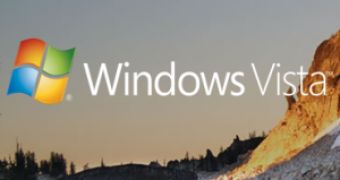With the advent of Windows Vista, the issue of downgrading to Windows XP came into the limelight and got a consistent amount of play throughout 2007. Initially, Microsoft had a complex downgrading process in place that forced Windows users to go from Vista to XP through unnecessary activation pains. As a direct consequence of user feedback, the company simplified the downgrading process, in order to streamline the implementation of an older Windows iteration in place of Vista.
Here was the old process of downgrading from Vista to XP, courtesy of Microsoft: "when an end user is using their downgrade rights offered under the License Terms in Windows Vista Business and Windows Vista Ultimate editions, and they use both Windows XP media and product keys that were previously activated, they cannot activate online over the Internet, due to the hardware configuration change when installing on the Windows Vista system. In these cases, the end user is prompted to call the Activation Support Line for assistance. Once it is determined that the end user has a valid Windows Vista Business or Windows Vista Ultimate license, the support representative can help them activate their software."
This is no longer the case at this point, and downgrade users do not have to manually activate each copy of Windows. The move from Microsoft helped made downgrades more mainstream, but at the same time generated a negative aura around the entire process. However, due to the mixed reviews associated with Vista, and because Microsoft is allowing select customers to go back to XP from the latest release of the Windows client, downgrading became virtually an antonym to upgrading. And this is not the case. Not even by far.
Customers and, especially, businesses have the option of acquiring new computers, as a part of the process of upgrading their hardware infrastructure, while also buying licenses for the latest Windows version available on the market. This is not to say that their environment is ready for a migration to Vista, and in this context, Microsoft is offering business customers the alternative of running an older variant of Windows until transition plans are complete.
"If your license of Windows has downgrade rights, then you can use: 'Volume Licensing media (provided the end user has a Volume Licensing agreement), retail (FPP), or system builder hologram CD (provided the software is acquired in accordance with the Microsoft OEM System Builder License)'. So any media for the qualifying downgrade version that the customer owns through another license already can be used", revealed Eric Ligman, Microsoft US Senior Manager, Small Business Community Engagement.
Where does the media come from? Well, Ligman offered the answer: "the downgrade media must be supplied to you from the end user and must come from Microsoft retail, OEM/system builder, or Volume Licensing channels." This actually means that the customer will have to deliver the media for the downgrade, in order for the OEM to take care of the process. The obvious alternative is for the user to perform the downgrade and to take the OEM out of the equation.

 14 DAY TRIAL //
14 DAY TRIAL //